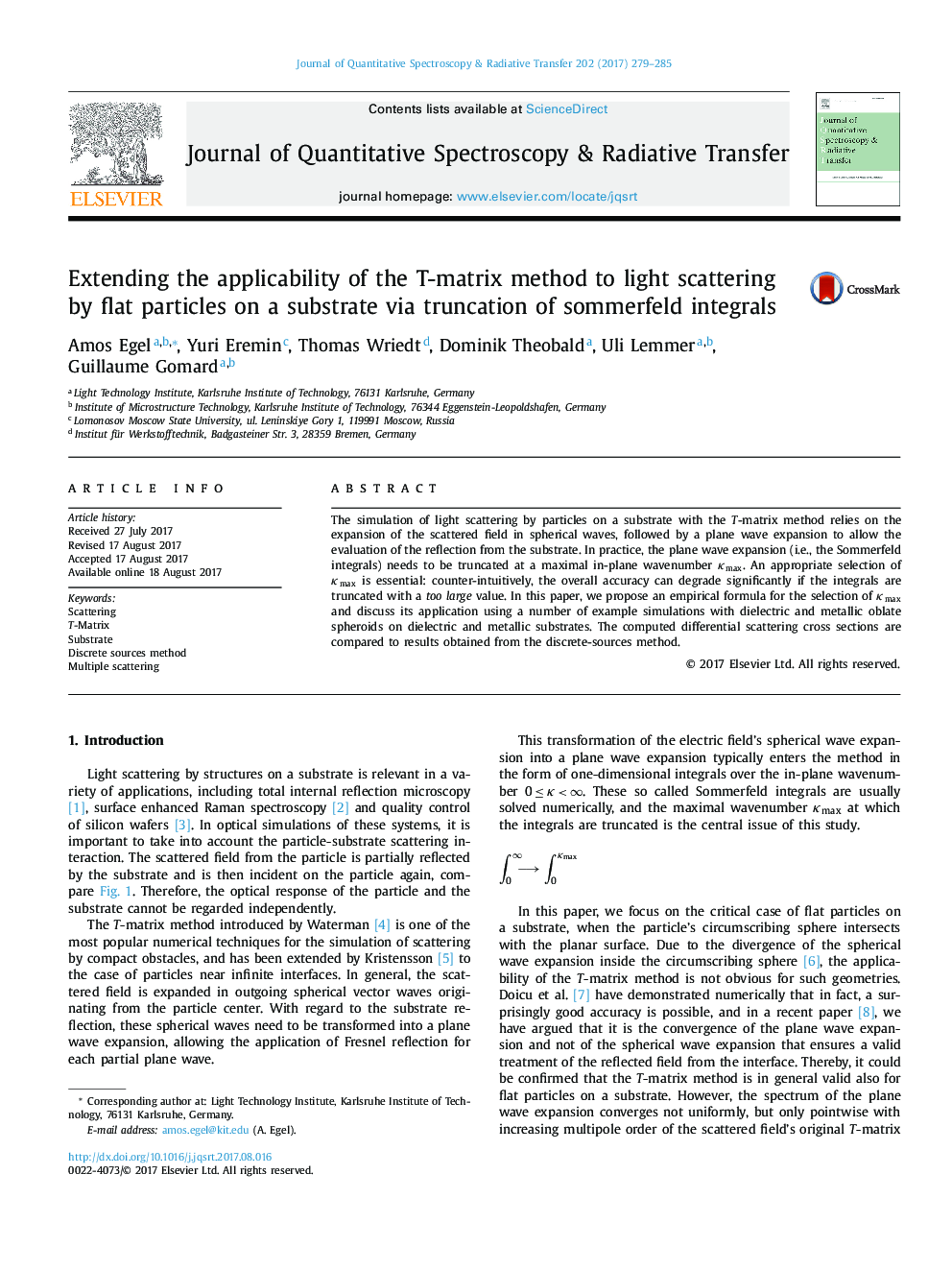| Article ID | Journal | Published Year | Pages | File Type |
|---|---|---|---|---|
| 5426958 | Journal of Quantitative Spectroscopy and Radiative Transfer | 2017 | 7 Pages |
â¢An empirical formula is proposed for the selection of the truncation scale for Sommerfeld integrals in the T-matrix method for light scattering by flat particles on a substrate.â¢Example simulations confirm that using the proposed formula, accurate far fields are obtained, whereas a larger truncation value leads to wrong results.â¢The method allows an accurate simulation of light scattering by dielectric or metallic flat particles in direct contact with dielectric or metallic substrates.
The simulation of light scattering by particles on a substrate with the T-matrix method relies on the expansion of the scattered field in spherical waves, followed by a plane wave expansion to allow the evaluation of the reflection from the substrate. In practice, the plane wave expansion (i.e., the Sommerfeld integrals) needs to be truncated at a maximal in-plane wavenumber κmax. An appropriate selection of κmax is essential: counter-intuitively, the overall accuracy can degrade significantly if the integrals are truncated with a too large value. In this paper, we propose an empirical formula for the selection of κmax and discuss its application using a number of example simulations with dielectric and metallic oblate spheroids on dielectric and metallic substrates. The computed differential scattering cross sections are compared to results obtained from the discrete-sources method.
